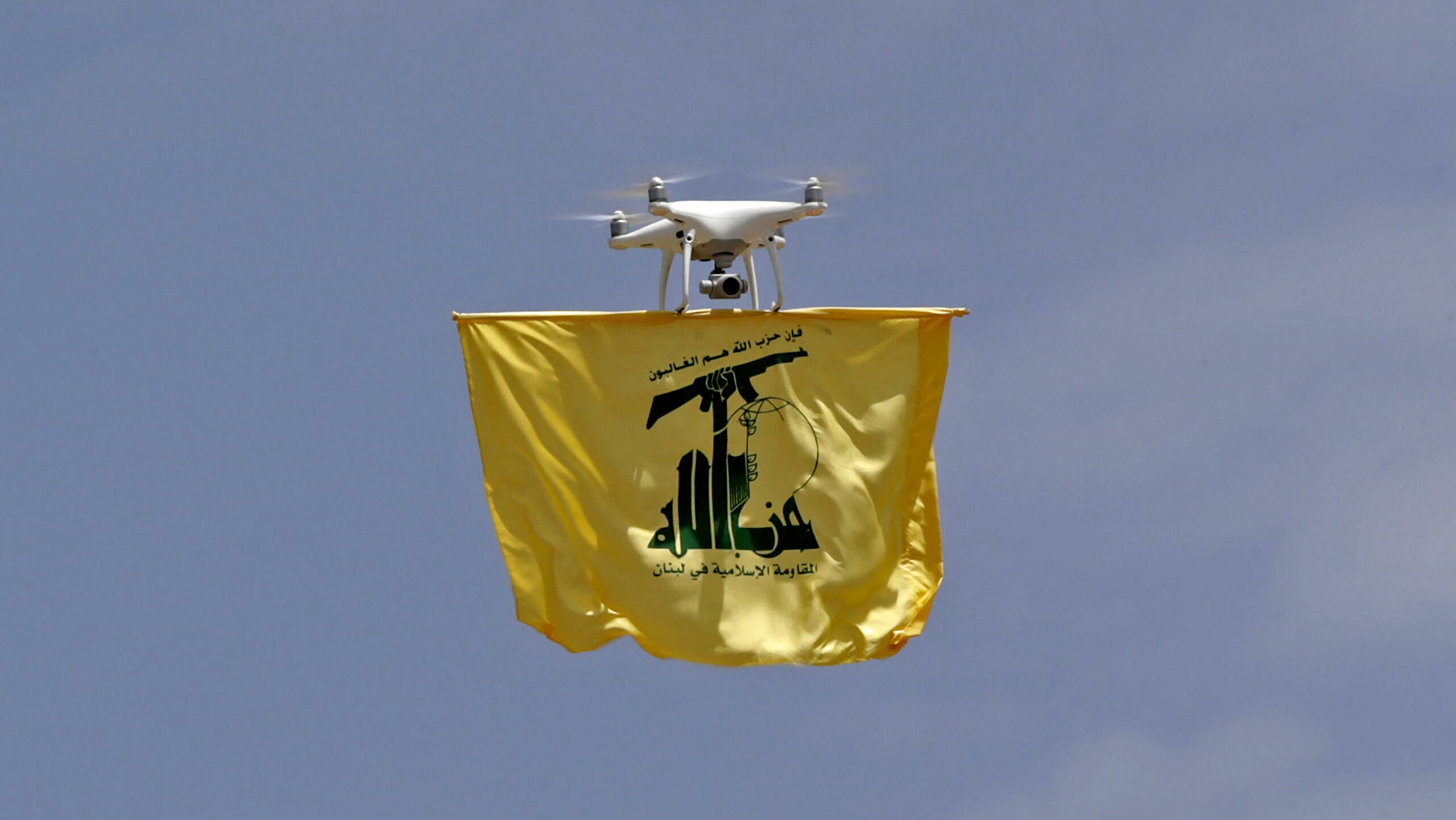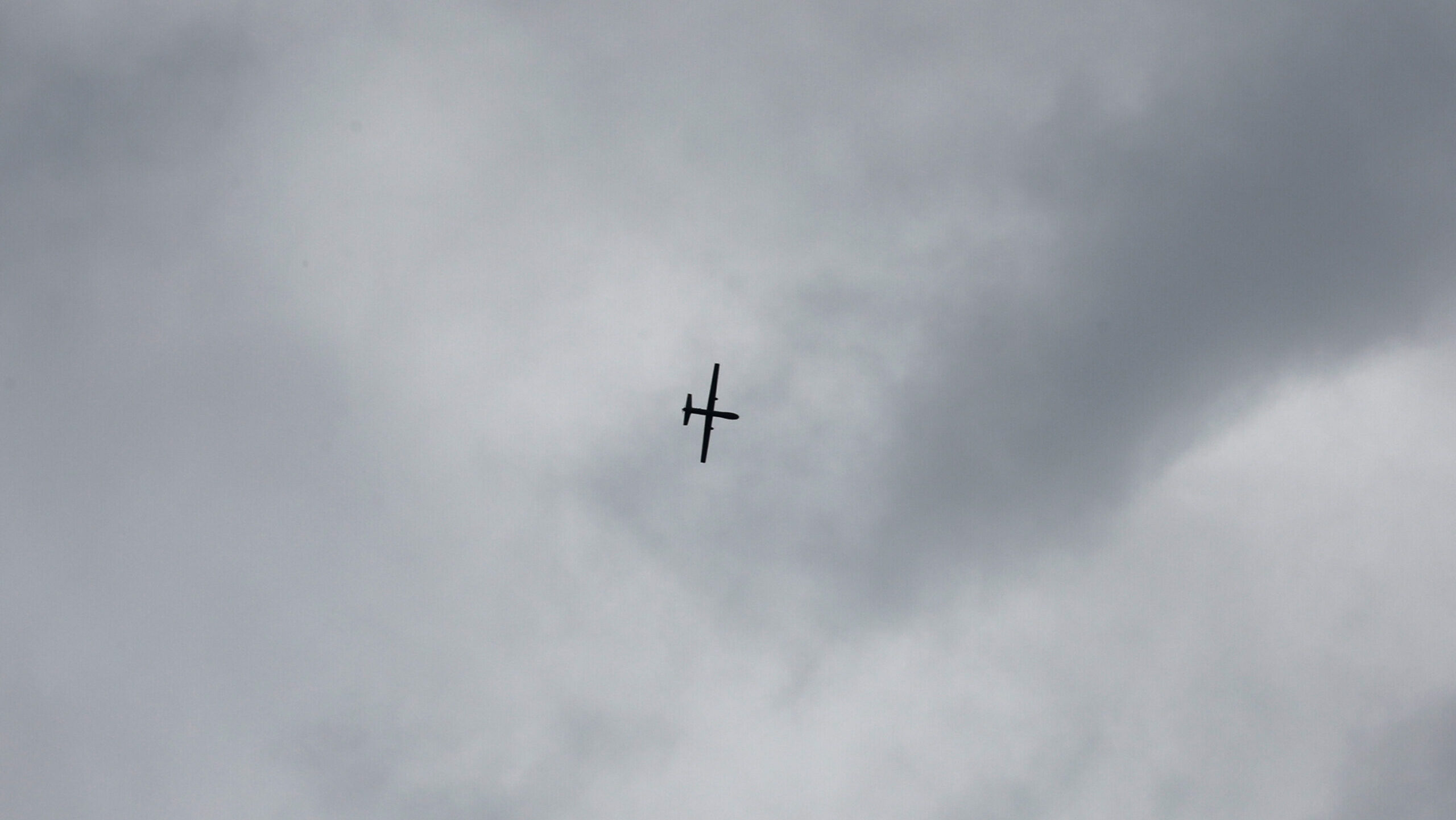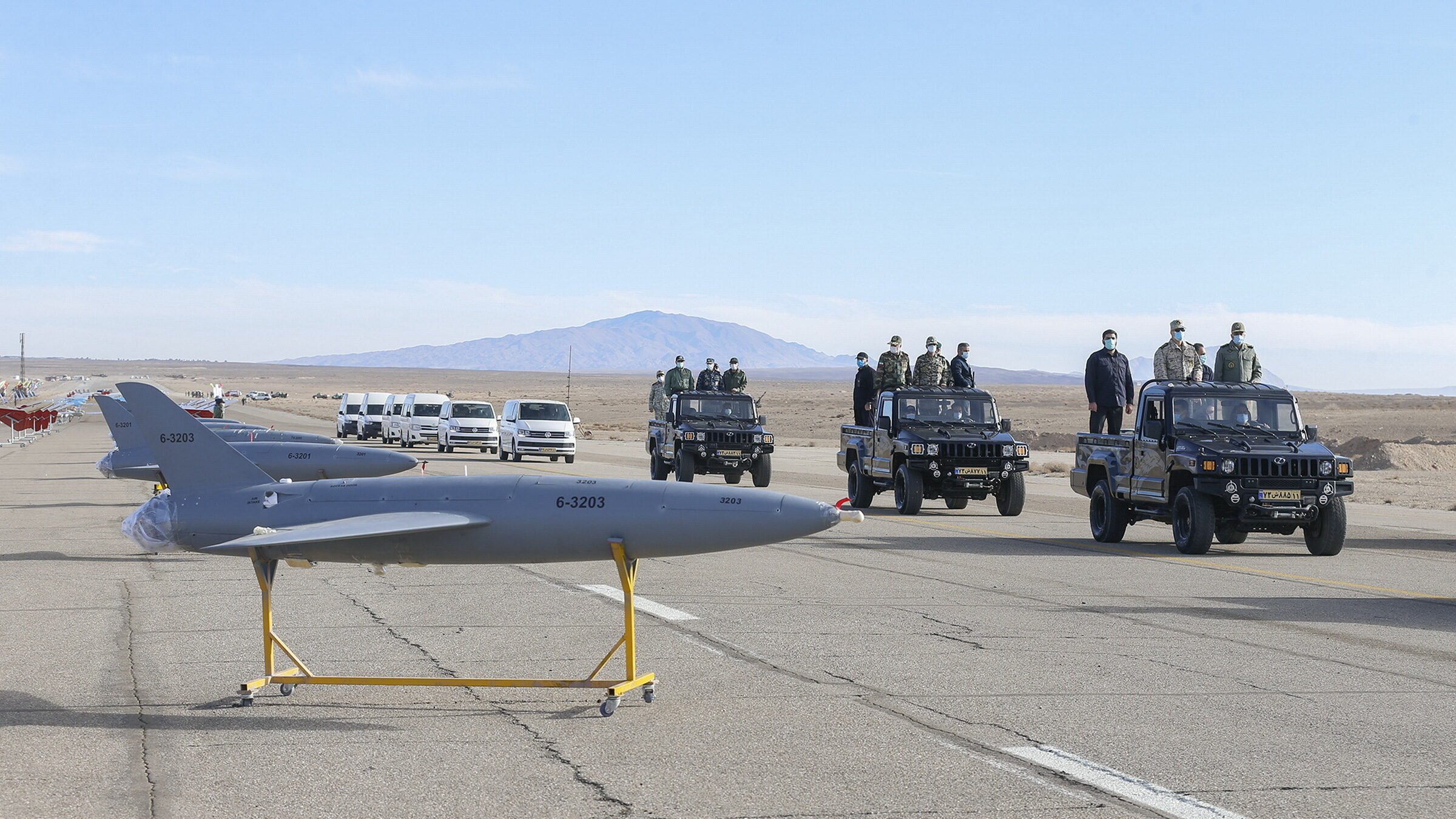AGNES HELOU

As the war in Gaza reaches the two-week mark, the conflict between Hamas and Isreali forces so far has been characterized by rocket barrages, missile and artillery strikes and bombing raids. It has not, perhaps surprisingly, featured an outsized role for unmanned aerial vehicles. But that could change quickly, analysts said, should Lebanese Hezbollah enter the fight in force and present Jerusalem with a difficult aerial challenge.
As part of its initial assault on Israel on Oct. 7, Palestinian Hamas did employ a novel use of drones, including using at least one quadcopter to help take out Israeli surveillance and communications installations, and used other drones in concert with rocket salvos. And Israeli forces have used what are likely larger, more expensive armed UAVs for some strikes.
But unlike the war in Ukraine, in which the extensive use of scores of drones prompted much spilled ink about revolutions in warfare, since the initial Oct. 7 assault, unmanned systems in Gaza have so far taken a back seat, according to public reporting. That may be because the local drone power, Hezbollah, has so far engaged in relatively small-scale actions and appears reluctant to open a second front from the south — a strategy that could change any moment.
“With regards to Hezbollah, the game changer is the quantity of its arsenal (which could easily overwhelm Israel’s air defense) but also its quality and diversity, be it drones and short-range ballistic missiles that Hamas does not have,” Jean Loup Samaan, senior research fellow at the Middle East Institute of the National University of Singapore, told Breaking Defense.
How Hamas Has Used Unmanned Platforms
Samaan said that for a while drone usage has been “increasingly visible” in the running conflict between Israel and Hamas — like when the group reportedly sent a couple unarmed drones near Israeli offshore gas installations — but Oct. 7 marked the first time Hamas has “really been able to use them effectively.”
Jean Marc Rickli, the head of global and emerging risks at the Geneva Center for Security Policy, said that it appears that Hamas has been inspired by the way Ukrainians have used drones.
“Hamas’ Oct. 7 attack used drones for surveillance and reconnaissance purposes but also to neutralize the Iron Wall’s CCTV cameras in simultaneous attacks, he said. “They also relied on fixed-wing kamikaze Al-Zawari drones to contribute with the numerous rocket launches to the saturation of the Iron’s dome system.”
He added that Hamas is also known to have a home-grown, long-distance drone, the Shehab, which carries an explosive warhead weighing 30 kilograms and can fly up to 250 kilometers, but he said it’s unclear if that was used in the Oct. 7 assault.
Beyond what they may have developed, drone expert Samuel Bendett told Breaking Defense Hamas could also make use of off-the-shelf options, like Ukraine and Russia have.
“It’s possible that numerous commercial drones like [Chinese] DJIs may be used by Hamas for ISR and combat against Israeli ground forces. But overall, wars are still fought by ground forces since wars are about holding territory, clearing out the adversary and controlling captured populations,” said Bendett, an AI and unmanned systems expert at US-based Center for Naval Analyses.
Israeli forces appear to be taking the threat of loitering munitions seriously, as vehicles have been spotted with so-called cope cages installed, which protect them from strikes from directly above.
For its part, Israel has publicized a few uses of its own unmanned platforms to conduct strikes, including against Hamas in the north as well as against Hezbollah targets in the south. Israel has used sophisticated drones for decades, but only recently admitted publicly that they arm them with missiles for strikes. These include larger drones like the Heron TP and Hermes 900, and the smaller fixed-wing Herman 450.

An Israeli drone hovers over the area near the border with Gaza on October 9, 2023.
Hezbollah has also reportedly used drones over northern Israel, but it’s unclear whether those were armed or for surveillance.
It’s that potential that the conflict will eventually draw in Hezbollah in full force that experts say could change the nature of the conflict altogether and the use of drones especially.
If Hezbollah Enters The Fight
As Breaking Defense has reported, the situation is very tense at Lebanon’s southern border with Israel.
Hezbollah and Israel have traded rocket and artillery fire, killing at least five Hezbollah fighters as well as a journalist. For the most part, however, the armed Lebanese group appears to have calculated that a wider war is not in their interest — as the US has hoped. But as expert Andreas Krieg noted, should Israel choose to launch a ground invasion of Gaza, that calculation could change quickly.
“The self proclaimed Axis of Resistance [Hezbollah] has suggested that it will not allow for a ground invasion, and it seems the Americans have given the Israelis a green light to do ground invasion. So in light of this, Hezbollah can’t really backtrack,” said Krieg, senior lecturer at King’s College London, and CEO of MENA analytica, a London-based strategic risk consultancy firm focusing on the wider Middle East region. (US President Joe Biden has publicly said it would be a “big mistake” for Israel to occupy Gaza but otherwise the White House has dodged the question of whether it would support an invasion.
He added that if a conflict happens, and “it’s very likely that it comes, Hezbollah is recalculating its risks and its objectives, and I would say that anything that can be done remotely from Lebanon without Hezbollah fighters being put in harm’s way and into combat is more likely.”
That would suggest Hezbollah could turn to artillery and missiles, but also to its extensive stockpile of unmanned systems, many purportedly from Iran.
“Hezbollah drone technology is very sophisticated,” he said. Krieg appear to diverge from Samaan’s view that they could the drones would easily overwhelm Israel’s defenses, as Krieg said Jerusalem’s counter-drone tech is “fairly sophisticated and they have been preparing for this.”

Unmanned aerial vehicles (UAV) drill held by Iranian army in Semnan, Iran on January 5, 2021.
Back in 2019, US military intelligence estimated [PDF] that Hezbollah had up to 150,000 rockets, though it didn’t offer a figure for unmanned systems. An Israeli think tank estimated last year that Hezbollah had some 2,000 UAVs, mostly from Iran.
Other than the munitions, rockets, artillery and missiles, Hezbollah has showed off drones during recurring military parades, including Mirsad-1 that reportedly has a 124-mile range; Ayoub, a Shahed-129 derivative of more than 1,000 mile range; and an access to Iranian-made drones, like Karrar, Mohajer and Sammad.
The buildup, according to IISS research fellow Fabian Hinz, has taken place over the years to counter Israel’s conventional air dominance.
“Israel’s biggest advantage for decades has been to have a highly sophisticated and unmatched air force in the region,” he told Breaking Defense. “But now with drones, aerial assets can be owned by non-state actors that can be used for reconnaissance, precision strike, and with some systems in precision strike in the depth of the adversary. So this is really the rationale from the Hamas and Hezbollah side.”
Should Israel go ahead with a ground invasion, that could offer new insights into how the Israeli Defense Forces incorporate smaller drones and loitering munitions into urban warfare, as they envisioned prior to Oct. 7.
“Aerial drones have certainly revolutionized how forces can conduct ISR and light combat missions. This is where many commercial drone technologies were instrumental in the Ukraine war,” Bendett said.
He said commercial drones have enabled faster and better understanding of the battlefield for infantry, armored vehicles artillery, special forces and irregular units fighting on the ground — for the IDF or for Hezbollah.
“In the Nagorno-Karabakh war, and now in Ukraine, the hard-earned lessons are that stationary positions and large concentrations of forces may be vulnerable to military and commercial-type drones. Therefore, Hezbollah drones may be important in providing ISR and kamikaze capabilities, but their and other drones’ effectiveness in conflicts is as good as the ability to identify and defend against them.”
What Chances Do Israel’s Air Defenses Have?
As Hamas launched a rocket and drone barrage into Israel on Oct. 7, the Jewish nation’s famed Iron Dome system reportedly struggled to keep up. The multi-layered defense system is designed to counter several different kinds of threats, but it has been largely untested against drone swarms.
“With regards to Iron Dome, its technology has evolved to include [defending against] drones,” MEI’s Samaan said. “The first case of Iron Dome intercepting drones was during the 2021 conflict, but because until now, the main threat was rockets, Iron Dome has not really been tested by UAVs.”
He added that the trajectory of drones makes it harder for Iron Dome to reach the same level of efficiency as with drones.
“Additionally, the Israelis are developing other systems, such as Iron Beam, which use laser technologies to counter drone attacks, but it’s not yet mature,” he said.
Fabian said that if Hezbollah sends only four or five drones at a time, it’s quite likely they will be shot down. “But if they managed to really launch a large number of drones, and combine these attacks with rapid fire, it might be a more effective.”
For now, all eyes are on southern Lebanon, where Israeli and Hezbollah actions over the next few days could set the course for the Middle East for decades to come, with or without drones.
No comments:
Post a Comment